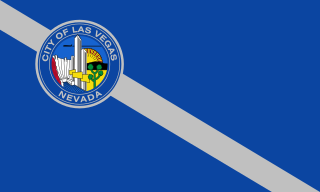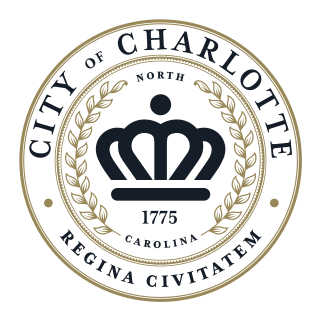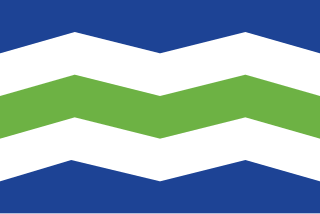
A national flag is a flag that represents and symbolizes a given nation. It is flown by the government of that nation, but can also be flown by its citizens. A national flag is typically designed with specific meanings for its colours and symbols, which may also be used separately from the flag as a symbol of the nation. The design of a national flag is sometimes altered after the occurrence of important historical events. The burning or destruction of a national flag is a greatly symbolic act.

The Mecklenburg Declaration of Independence is a text published in 1819 with the now disputed claim that it was the first declaration of independence made in the Thirteen Colonies during the American Revolution. It was supposedly signed on May 20, 1775, in Charlotte, North Carolina, by a committee of citizens of Mecklenburg County, who declared independence from Great Britain after hearing of the battle of Lexington. If true, the Mecklenburg Declaration preceded the United States Declaration of Independence by more than a year.

The flag of Florida consists of a red saltire on a white background, with the state seal superimposed on the center. The flag's current design has been in use since May 21, 1985, after the design of the Florida state seal was graphically improved and officially sanctioned for use by state officials.

The flag of the Commonwealth of Massachusetts is the flag of Massachusetts. It has been represented by official but limited-purpose flags since 1676, though until 1908 it had no state flag per se to represent its government. A variant of the white flag with blue seal was carried by each of the Massachusetts volunteer regiments during the American Civil War alongside the National Colors. An exception were the two "Irish regiments", each of which was permitted to carry an alternative green flag with a harp symbol.

The flag of Washington consists of the state seal, displaying an image of its namesake George Washington, on a field of dark green with gold fringe being optional. It is the only U.S. state flag with a field of green as well as the only state flag with the image of an American president. The secretary of state regulates flag protocol related to the state flag, as well approving replica flags for commercial sale and other standards related to the flag.

The city flag of Los Angeles consists of a background of three notched stripes of green, gold and red. The flag was designed by Roy E. Silent and E.S. Jones in 1931 for the Los Angeles sesquicentennial from 1781.

The flag of Nashville, Tennessee, consists of the city's seal on a white disc surrounded by a field of blue, with a strip of gold on the fly. According to the resolution adopting the flag, the blue stands for the courage and conviction of the city's leaders throughout history, while the gold denotes the richness of city's land and resources. The flag was adopted in December 1963 when the governments of Nashville and Davidson County merged to form the Metro government. In an official ceremony, it was reigned in as the new flag on August 4, 1964, at the Metropolitan Courthouse. The flag is modeled after the Tennessee state flag.

The city flag of Portland, Oregon, consists of a green field on which is placed a white four-pointed star from which radiate blue stripes, each bordered by L-shaped yellow elements. Narrow white fimbriations separate the blue and yellow elements from each other and from the green background. The official ordinance specifies a height of 3 feet and a length of 5 feet.

The flag of Las Vegas, consists of blue field with a diagonal gray stripe running from the top of the hoist to the bottom of the fly. Las Vegas' city seal, adopted in 1966, is located in the canton breaking the stripe.
The flags of the provinces of the Philippines are the vexillological devices used by various provincial-level local government units (LGUs) of the country.

New England has no official flag. However, there have been many historical or modern banners used to represent the region in its history. While there are some variations, common designs include a plain colored field with a pine tree in the canton. The eastern white pine is the most common and prominent symbol of New England and is featured on many of the region's flags.

The current flag of Jacksonville was adopted by the Jacksonville City Council on 24 February 1976. It was designed by Don Bozeman, winner of a design contest prior to the 1975 Bold CityFest, the annual celebration of the city/county government consolidation. The city's previous flag, designed by Edmund Jackson and adopted in 1914, was considered outdated.

The flag of Charlottetown is the official municipal flag of Charlottetown, Prince Edward Island. It was designed by Robert D. Watt.

The flag of Austin is the official municipal flag of Austin, Texas. The flag simply consists of a white field with the seal of Austin without the surrounding circle of text. Below the seal of Austin is the text "CITY OF AUSTIN", written in blue and arched upwards.

The flag of Columbus is the official municipal flag of Columbus, Ohio. Its current design is a yellow, white, red vertical triband with the city seal on a blue field. Officially, the flag was adopted in 1929, although it is unknown if the flag was ever flown when it was first adopted.

The Seal of Charlotte was first established during the tenure of mayor Charles A. Bland, and was designed over a period stretching from 1911 to 1915. It was adopted on the city's first flag in 1929, which still remains in use today. This seal itself was rescinded at an unknown date and replaced with the present one. It is used to authorize executive documents from the city, including, but not limited to, mayoral proclamations and resolutions from the city council.

The flag of El Paso is the official municipal flag of El Paso, Texas. The current design, an augmentation of El Paso's seal in the center of a dark blue field, has been in place since 1962.

The flag of Raleigh is the official municipal flag of Raleigh, North Carolina. It is one of the few American city flags to currently feature different designs on the obverse and reverse. Both sides feature a similar red-white-red vertical triband with an emblem in the center. The obverse features the Seal of Raleigh. The reverse has a modified version of the coat of arms of Sir Walter Raleigh.

The flag of South Bend, Indiana, was adopted by the city council during the mayorship of Pete Buttigieg on April 25, 2016. It is a field of white and yellow separated by a two blue curved lines with a white line between them and a red six-pointed star in the upper left corner.

The flag of Burlington, Vermont was adopted by the Burlington city council on November 27, 2017 during the mayorship of Miro Weinberger. It is five horizontal, zig-zag stripes of blue, white, green, white, and blue.






















